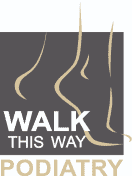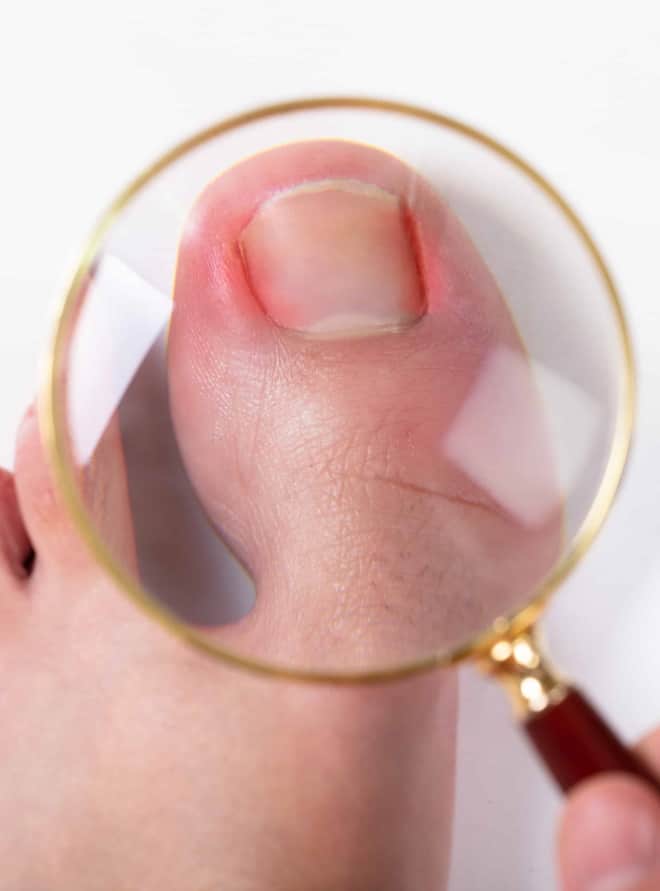If you have ever experienced it, you know ingrown toenails’ pain can be excruciating. Sharp and stabbing, ingrown toenails’ pain not only can affect your ability to walk but also lead to further complications such as infection of the nail. This is why taking the necessary precautions to avoid developing this condition is an essential part of your daily foot care routine.
Ingrown toenails is a foot condition that happens when the edges or corners of the nail grow into the skin next to the nail and break the skin, causing swelling, redness, and sometimes infection.
The good news is that ingrown toenails are relatively easy to prevent from occurring if you follow the appropriate nail care.
This is what you can do to avoid them:
- Trim your toenails correctly
When it comes to cutting your toenails, don’t go too short. Cut them across in a straight line using sharp, straight-edged, toenail clippers. Avoid cutting the nail into an oval shape, as this can leave rounded nail edges that may later grow into the skin. If you find that your toenails are hard and difficult to trim, soak them in warm water first to soften them. Make sure you dry them properly before cutting them as when they are wet, they are more likely to tear and create jagged edges. After cutting, use a nail file to carefully smooth the top of the nail to remove any rough edges.
- Avoid close-fitting footwear
One of the main causes of ingrown toenails is wearing ill-fitting footwear, especially when it is too tight around the toes. We tend to go for the style of shoes without giving too much thought to how well they actually fit. Make sure you choose shoes that are properly-fitted for the size of your feet — this is neither too tight or too loose — with plenty of width in the toe box, and socks or tights that do not overly
compress your toes. Your feet should feel snug and well supported without any pinching, so you may need to ditch your stilettos or wear them only for special occasions. A good practice when shopping for new footwear is to try on shoes in the afternoon, when your feet are at their largest, this will avoid getting the wrong size. Moreover, choosing shoes that have shock-absorbing soles can help reduce pressure on the feet, especially the toes. When wearing closed toe shoes, it is also advisable to put on tights or socks to minimise friction and protect your feet. And finally, throw away shoes with badly worn soles or heels or get them properly mended by your cobbler before wearing them again.
- Adopt a good foot hygiene
If your feet fall behind, so do you. You need healthy feet in order to maintain your full mobility, hence looking after them is essential. You should get to know your feet well so that you can know what’s normal and when to tackle any abnormalities. Firstly, be sure you maintain high levels of hygiene by washing, drying and moisturising them daily to prevent skin from cracking and improve its texture.
If you spot any changes in their appearance, such as sores, redness, swelling or colour change, or if you feel any form of irritation or tenderness, you should seek professional advice. Your first stop should always be your local podiatrist who can make an expert assessment of any existing, or potential problems.
This is particularly important if you suffer from a medical condition such as Diabetes, as an ingrown toenail may quickly become infected due to the lack of blood flow and nerve sensitivity. Catching the start of an ingrown toenail early can help avoid pain, discomfort, and other more onerous complications like amputation.
Duly caring for your toenails today is the best way to prevent ingrown toenails tomorrow.
After treating many cases of ingrown toenails, it’s safe for me to say that nails recover to a full normal growth, including recurring conditions, after having received our professional treatment and preventative advice.
We can tend ingrown toenails and have you back on your feet in no time. You can find out more about our recommendations on how to get rid of ingrown toenails here or get in touch to book a consultation.








